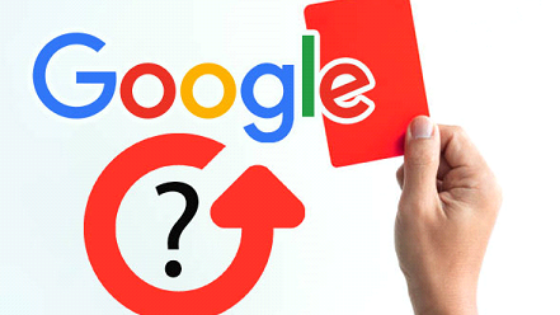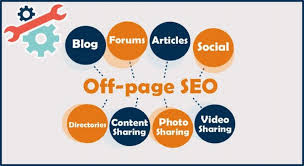A Guide To Google Penalties And How To Fix Them!
Not a single administrator or site owner would want their site to be subject to sanctions like loss of organic traffic, a place in search results and, most importantly, customers and income. With the help of Google penalty recovery service, you can bring out your site from any penalty. So, what you need to pay attention to and what to avoid so that your site does not fall under sanctions, you will learn in this blog.
Cloaking and Covert Redirects
The name is very strange and tricky, its essence lies in the fact that you show the user, not the page that he sees in the search results. This mechanism is implemented through covert redirects. There are two types of punishment for cloaking:
Partial: affect the part of your site;
Large-scale: apply to the entire site.
How to fix
In the Google Search Console, compare the content on your page with the content received from Google. Eliminate the differences between them, check forwarding and redirection. After resolving the errors, submit the site or page for re-verification. These types of redirects are often created by CMS plugins, which can be in your .access file or written in JavaScript.
Another type of cloaking is to restrict content to users coming from Google services in accordance with the Google First Click Free policy. That is, in the search results, you provide content that is relevant to the user, but when you go to the site, he cannot view it due to the lack of registration on the site, log in to the system or subscription. To fix this error, make the necessary changes and send the site or part of it for re-examination.
- Hidden Images
Similar traps also apply to images. For example, the shading of one image by another, the difference between the original and what the user sees in the search results, redirection from the image to another resource.
How to fix
As in the previous version, compare the image on the site and in the Goggle search, check the redirect and send a request for re-verification. Also, make sure that plug-ins and plug-ins do not create image problems.
- Hacked Site
Hackers are constantly looking for ways to hack popular CMS to inject malicious content and links. Many pests do it so masterfully that the site administrator sometimes does not notice the catch. When Google’s algorithms recognize a hacked resource in a site, the label “This site may have been hacked” is hung on it. This leads to a decrease in search results.
How to Fix
Contact technical support with this problem. Quarantine the site to prevent further damage. Use the search console to determine the type of hack, vulnerabilities, and total damage. Eliminate errors and inaccuracies to prevent the hacker from re-entering the console. After the measures taken, send a request to Google to review the site. Always have a backup of your site on hand. Install plugins or extensions that will be responsible for the security and to prevent attempts to crack it.
- Hidden Text and/or Oversupply of Keywords
If the page title does not match what is shown in the search results, wait for the ban hammer. In the Google Search Console, search for hidden text using CSS styling or positioning. Delete or rearrange hidden text so that it is understandable to the user. Remove unnecessary keywords. Fix the <title> and <description> tags. Submit a request to re-check the site after resolving these issues.
Also Read :- https://seo-company-in-bangkok.blogspot.com/2019/10/ultimate-guide-seo-keyword-research-for.html
- Clean spam
Unlike many other reasons for sanctions, the owner or administrator of the site is sometimes responsible for spam. This mistake lies in the use of aggressive spam methods, including the generation of meaningless text, scraping, cloaking and other violations. Scraping is a technique by which text copied from other resources is inserted into the site. Also called content parsing.
How to Fix
If this is the first violation, take steps to resolve the issue and follow the Google Webmaster Guide. Submit a reconsideration request after resolving the issue.
Also, the danger may be a free hosting. Theoretically, it is free, but in practice, you will have to deal with a lot of ads and advertisements, the flow and content of which you cannot control. Therefore, it makes no sense to risk your site in the hope of saving money.
The third spam threat is the spammed advanced snippets. If during their creation you do not follow the recommendations of the extended description and the markup of content that is invisible to users, your site will be subject to sanctions.
- Poor Quality Content
Low-quality content is most often understood as irrelevant texts, an overabundance of keywords in them, scraping and non-unique texts.
How to fix
Check all texts for uniqueness using special programs and replace them with unique ones. Optimize the content of keywords in texts, use LSI - copy writing. Define and delete doorway pages. After fixing the errors, send a request to re-check the site.
- Unnatural Links
To your website: This is the most common reason for sanctions. Buying links and/or participating in schemes to speed up joining SERP is a clear violation of Google’s webmaster rules. Upload links to your site in the Google Search Console and checks to see if there’s a conversion issue. Disable any links that you cannot remove or that cannot be clicked on. Submit a reconsideration request after you have cleared your communication profile.
From your site: In fact, any links that exist to manipulate search rankings are identified during a manual check. To prevent Google from perceiving them as such, remove or modify these links by adding the rel = “no follow” attribute. Submit a reconsideration request after removing incompatible links.
- User Spam
Have you often had to deal with daily spam messages in which you are offered cheap SEO-optimization and fast results? So, for this, you can thank those users who leave such messages on the forums, in the comments on the posts or users of your site in private messages.
How to fix
Identify the pages or accounts of registered users who post similar messages or comments. Pay attention to user spam nicknames. Delete comments that contain links that are not related to the subject of the conversation. Install modules or plugins to prevent unwanted content from appearing on the site. Request a re-check after all errors have been identified and corrected.
Summing up!
The above-mentioned guide on Google penalties and how to fix them will help you to protect your site. If your site is hit by Google penalty like Panda, Penguin or Hummingbird update, then you can contact the SEO experts will help you.



Comments
Post a Comment